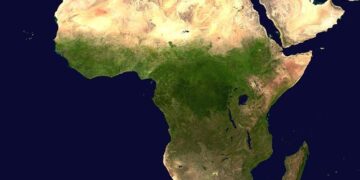Rediscovering Mvskoke Cuisine: A Journey Towards Food Sovereignty
The Revival of O’safke and Cultural Heritage
The Mvskoke people are embarking on an inspiring journey toward reclaiming their culinary roots through the resurgence of O’safke, or green corn. This initiative signifies more than just a revival of traditional crops—it embodies a broader movement for food sovereignty, highlighting the intersection between cultural identity and ecological preservation.
Significance of Green Corn in Mvskoke Tradition
Green corn is not simply a staple in the diets of the Mvskoke people; it has profound cultural importance. Traditionally harvested during summer ceremonies, it symbolizes renewal and sustenance. Today, as communities strive to strengthen food autonomy, rediscovering practices associated with O’safke presents an opportunity to restore connections within families and with nature.
Modern Political Context and Food Systems
In recent years, there has been an increasing acknowledgment of food sovereignty as a crucial element for indigenous communities. This shift aligns with global movements advocating for sustainable agricultural practices that respect local ecosystems while ensuring access to culturally significant foods. Current statistics indicate that approximately 80% of Indigenous peoples face challenges accessing traditional food sources due to socio-economic barriers and environmental changes.
Ecological Implications
The cultivation of green corn also ties into larger ecological themes such as biodiversity conservation and sustainable farming techniques. By reviving traditional agricultural methods—including intercropping and organic gardening—the Mvskoke community promotes healthier ecosystems while enhancing crop resilience against climate fluctuations.
Case Studies: Success Stories from Other Indigenous Communities
Similar initiatives can be observed among various Native American tribes across North America who have championed food sovereignty principles. For instance, the Navajo Nation’s “Three Sisters” gardening technique (which includes planting corn alongside beans and squash) exemplifies how integrating tradition into modern practices fosters both sustainability and nutrition.
Steps Toward Empowerment Through Food Sovereignty
- Education: Workshops that teach young members about traditional farming methods create links between past practices and present-day necessities.
- Advocacy: Lobbying for policies that support indigenous agriculture ensures protection over ancestral lands used for cultivation.
- Community Engagement: Activities like communal harvesting not only provide access to nutritious food but also reinforce social bonds vital for community well-being.
Conclusion: A Sustainable Future Rooted in Tradition
Through these revitalization efforts surrounding O’safke, the Mvskoke community is paving a path toward greater self-sufficiency while honoring their heritage. As they cultivate green corn fields today, they are not just growing crops; they are nurturing identities aligned with healthful living balanced within the web of life on Earth—a true testament to resilience through traditional knowledge merging seamlessly with contemporary advocacy for sustainability.
By embracing this renaissance in their agricultural practices, indigenous communities can inspire broader movements towards collective empowerment based on ecological stewardship combined with deep-rooted cultural values—ultimately redefining our relationship with nature itself without compromising tradition amidst modern dilemmas.































